AN EXCLUSIVE INTERVIEW
WITH GEMMY WOUD-BINNENDIJK
BY JOSÉ JEULAND
Originally published in the International Lens Magazine

Gemmy Woud-Binnendijk © All rights reserved.

Gemmy Woud-Binnendijk is a Dutch fine-art photographer. Her work is inspired by Old Master painters. Learning about art history from a young age, Woud-Binnendijk combines the Chiaroscuro principle and the Sfumato technique to emulate the traditional manner of the Dutch golden age masters like Rembrandt and Vermeer.
Woud-Binnendijk, Born in the mid-seventies, is a mother of five and 100% addicted to coffee. She is a self-taught, sensitive, and strong artist with an infinite creative urge who is always full of patience to grasp ‘the other side’ of a person.
After graduating as a Goldsmith, Gemmy studied Multimedia Design.
In 2016 she began practicing photography, and it has taken over her life. Attracted by the same light of the old Dutch masters, she re-discovered her passion for painting and drawing. Using the same chiaroscuro techniques, she creates depth. By stacking colors and color tones, she makes soft and elusive transitions. The combination of the inherent love for people and animals with a strong urge to create composes contemporary artwork in the light of the past.
Gemmy depicts her talents via a variety of artworks. Whatever the subject, her constant urge for perfection rises to exhibit the ever-present beauty in life, the way she sees it. In addition to beauty, the main themes of her work are suffering and loneliness and love, and trust. Revolving these motifs, she gives form to her struggles through her artistry.
For many people, the pressure to belong becomes dominant at a very young age; it is then, she believes, that essential life issues such as being content with yourself and finding your passion are forgotten.
Enchanted by her intense beauty, Melanie Gaydos became Gemmy’s ambassador for the project.
In the rest of the artist’s oeuvre, we see that perfection is a guiding principle. Scenes are always meticulously portrayed and are often reminiscent of paintings by the old masters of the past and the present. Gemmy presents, like no other, the beauty of the combination of technique and her emotions.
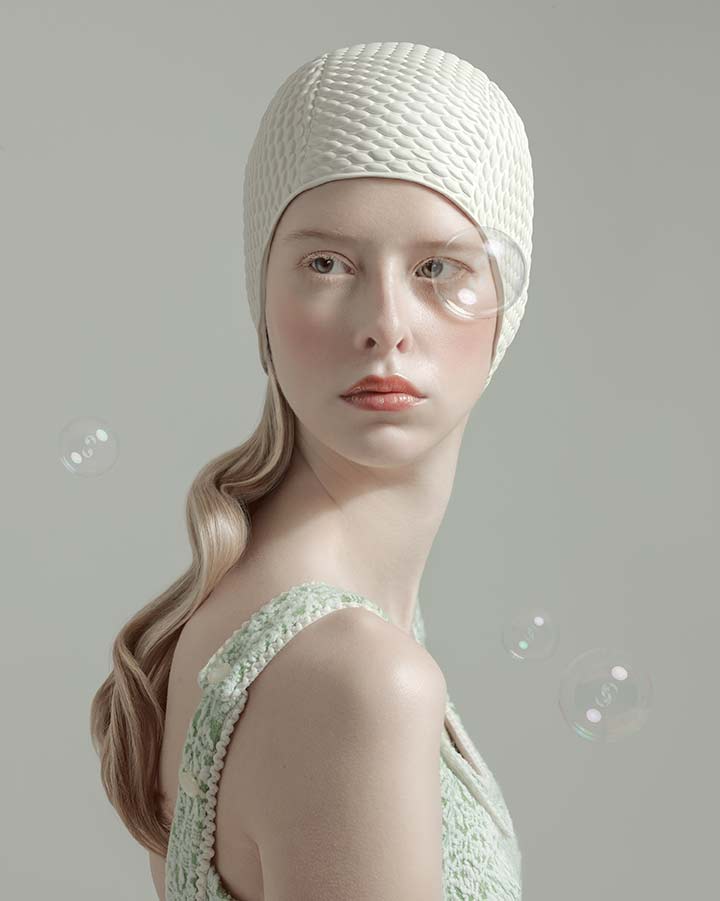
Gemmy Woud-Binnendijk © All rights reserved.
José Jeuland: Many thanks, Gemmy, for taking the time for this interview. It’s a pleasure featuring your unique, outstanding artworks, influenced mainly by the Masters’ artistic style. Let’s start with your background in photography.
I remember seeing your work for the first time in an advertising video about your photography classes, and it was awe-inspiring. Can you share with Art Market’s readers your journey in photography? What was the main thing that drew you into being a professional artistic photographer? Did you come from a creative family?
Gemmy Woud-Binnendijk:
Thank you! It’s a pleasure having this interview. I was drawing and painting a lot from an early age; I was always busy creating. My grandma had the same creative spirit, so I loved spending time with her. Sewing clothes, gluing boxes together to build a house, creating was just as important to me then as it is now.
I graduated from Goldsmith, worked in multimedia design in the early days of the internet, and kept being creative while starting a family. After a few years, things changed in my personal life, a breakup, a new home, and a new life, I also had some physical issues, and I had to give up painting.
At that point, I had to reinvent my creative life. Five years ago, I bought a camera and started experimenting with photography; it wasn’t love at first sight, but that changed when I followed a fine-art workshop that inspired me and changed everything!
All the things I’ve been doing in the past fell into the right place. I can use my camera to paint, tell stories and play with light.
Even crafting has a purpose now, and I can find myself enjoying photos editing. That day, as I joined the workshop,
I really found my passion.
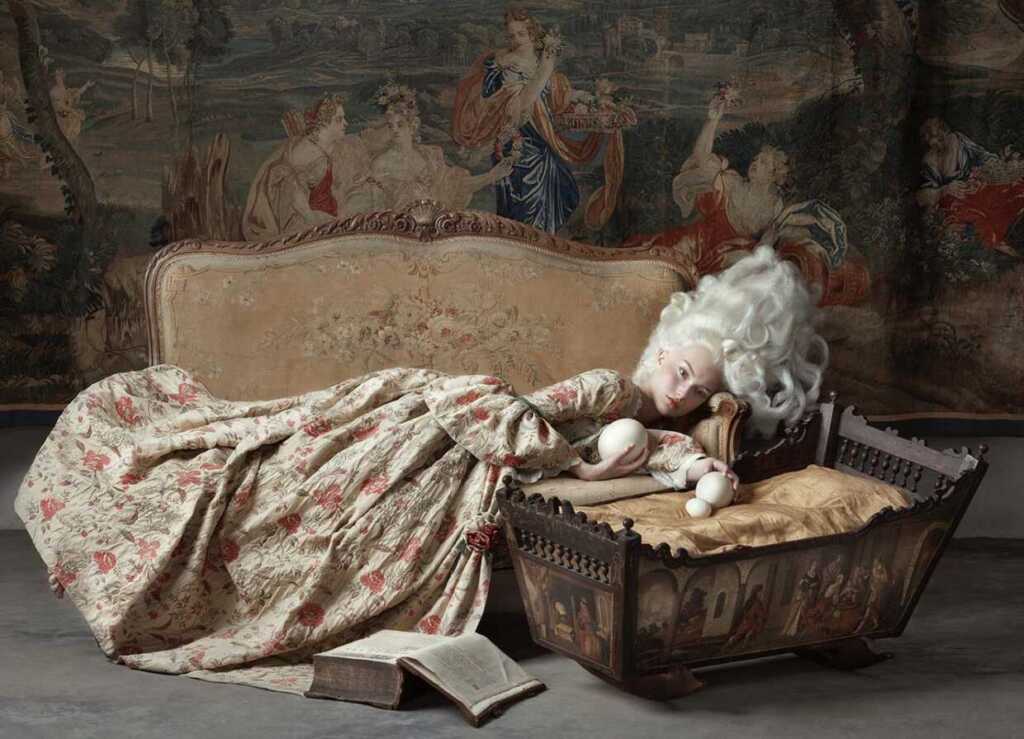
Gemmy Woud-Binnendijk © All rights reserved.
J. J.: What led you to focus on this Master’s style specifically?
G. W. B.: From an early age, I always loved historical art paintings, composition, dramatic characters, and light had a significant impact on telling a story or mood. When I painted, I always tried to play with light in the way; I think everything fell in place for me, and it was natural to find my way in this niche of the Master’s artistic fine art photography.
J. J.: Can you point on a specific moment through the past years that was a “Key Point” in developing your career?
G. W. B.: I can’t point to a specific moment. After the fine art workshop, every shoot I do is another key point in my journey of getting better, learning, and developing.
J. J.: For creating this unique photography style, you obviously need to have a deep knowledge of the Master’s work, including a high technique in portrait photography. Would you say it came from your studies at Goldsmiths, University of London?
G. W. B.: The knowledge did not explicitly come from my studies at Goldsmiths University; I think everything I’ve learned is a combination from studies during the years, workshops, online courses, and the simple things constructing the everyday life. They are all significant and play a role in my knowledge. In my projects, I like to create every detail, prop, or set by myself.
It’s not always doable due to time pressure or the items’ cost, but it’s becoming my own complete creation and a part of me. Every image is entirely part of my creation.
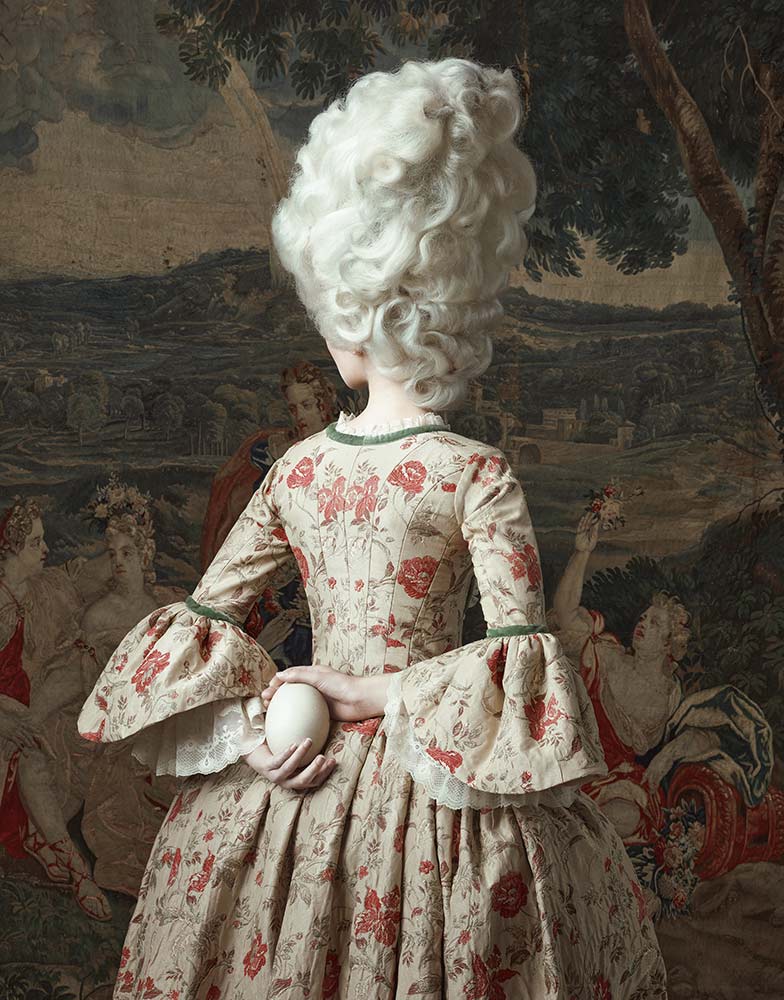
Gemmy Woud-Binnendijk © All rights reserved.
J. J.: Where do the ideas for new projects come from? Can you describe the workflow in your creation from the concept point to the final outcome? And how long it takes from the idea to the finalized project?
G. W. B.: Most of the time, projects develop from things that bother me, I feel sad about, or just need to express emotions. So every project is based on something personal. When I know in which direction I want to take an idea, I start collecting things that come close to the story I want to visualize in an image.
Pinterest is my favorite way to start, primarily when you work with a team ( styling/hair and make-up); you find examples and can easily share the direction you want to take the project. Make sure everyone is on the same page in color and mood-wise.
Then, I’ll start making sketches, light plans, and building props and set. Finding a model that can tell the story is also very important. Everything needs to be in balance. On a shooting day, everything comes together beautifully. After that, there’s the culling and post-processing part.
J. J.: You are a mother of five. Do you sometimes use your family members in your projects?
G. W. B.: In the early beginning, I practiced a lot with my daughter. She became my primary model. The funny thing is that I recently shot a project for a big high-end brand, and they’ve asked me if she would like to be the model for two images in that art project. She was really proud! I think practicing with your own family is the best ( they are the most patient and less judgmental, which will help your development).
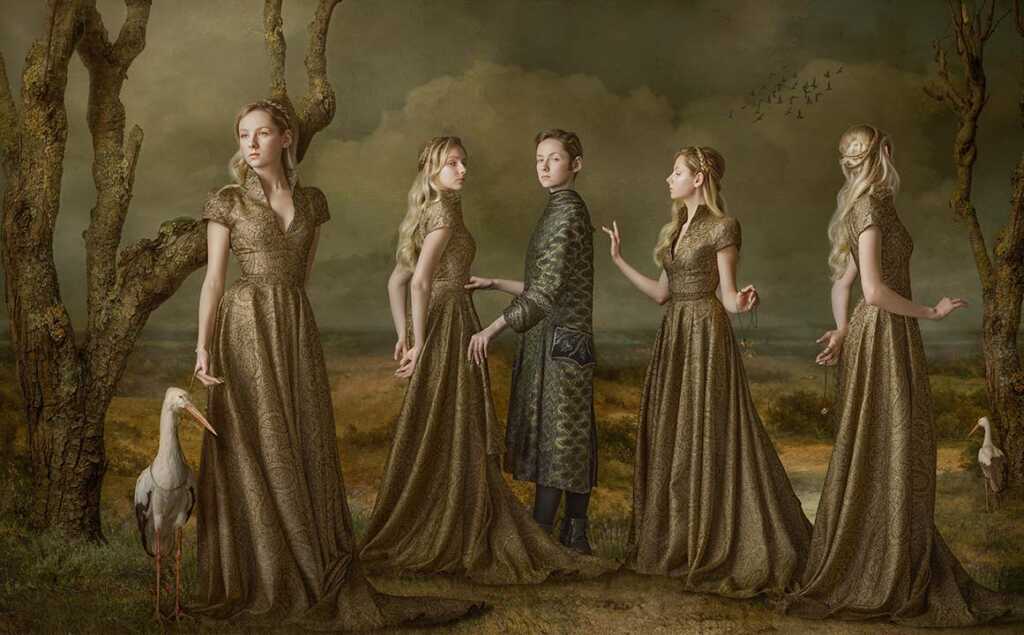
Gemmy Woud-Binnendijk © All rights reserved.
J. J.: Tell us about your schedule or routine? Between your job and your family, what is a typical day?
G. W. B.: I don’t have a standard routine; there is a line between work and personal time. When you really start living for your passion, there’s no clock or day that you can switch off. It’s always on, always in working mode. So even if physically you are doing something else, your mind is focusing, imagining the next project.
Sometimes I make significant concessions because of my passion. My husband is considerable support for me, and I’m really grateful for his patient and help. The kids are getting bigger and more into doing their own thing, so I think at this point, I’ve found an excellent balance to follow my creative urge.
J. J.: You are well known for your personal projects. Do you do also have commercial or commissioned projects? Do you accept portrait projects for individuals?
G. W. B.: Of course, I also do commercial work and private commissions projects. I Just finished a project for a really high-jewelry brand; the project took four months of preparations, shooting, and post-processing. These projects are great but also ask a lot of effort and investment, creating an image that makes the client happy and that I will be satisfied with the result. So you have to work within the given boundaries.
I have complete freedom to create and direct it as I visualize the idea or story in my personal projects. Private family shoots can be very surprising, especially when the client trusts you and gives you complete freedom to create. I’m not a big fan of making the standard family portraits; I always try to add something extra. I want a unique result.

Gemmy Woud-Binnendijk ©
All rights reserved.
J. J.: You are probably putting an enormous amount of effort into post-production/editing the images. What kind of programs are you using? Do you do the post-production yourself? How did you learn these skills?
G. W. B.: I’m secretly a big computer nerd, my father was a big gadget freak, and I’m from the period that you could make your own games with HTML and cassettes with that annoying beeps and sound. During my multimedia training, I’ve learned how to use graphic adobe software. I shoot everything tethered with one capture; I really can’t judge what I shot in the small camera display, and I’m a slow shooter, which means I take a few shots, adjust what I dislike, etc., and slowly get the picture in balance. Then, after the shooting, I start editing the images.
Post-processing can take up to 20 hours for one image. I shoot with a 150mp camera, so every pore, dust, or fabric fold is visible, so it’s less forgiving and more work in the editing. But I’m really in love with the quality and details I get. So I use Photoshop to edit my work. I’m a big control freak, so I try to do everything myself.
J. J.: Would you say you express a more emotional aspect in your work combined with visual beauty, or are you trying to describe a philosophical idea?
G. W. B.: Emotion is the most significant starting point in every image I shoot; I intended to be driven to darker / heavier emotions than a person would generally show to the outside world. I think it’s a combination of expression, beauty, and a hidden message that can be interpreted in many ways, recognizable in different forms for every individual.
I like to give my work an open-end story so the viewer will create their own story based on their own personal life experiences.
J. J.: Tell us about the current position in your career. Are you exhibiting your art in galleries? Where can we find your artwork for sale? (Exhibitions/ auctions/ online) Do you sell prints? How many do you release per year? Is it a limited edition?
G. W. B.: I have a few galleries ( online and physical) that exhibit and sell my work, like Upon Walls, Warnars & Warnars Art Dealers, Art N Folie. All of the prints are in a limited edition of 10 + 2AP. The released amount is depending on the number of projects I’ve shot that year.
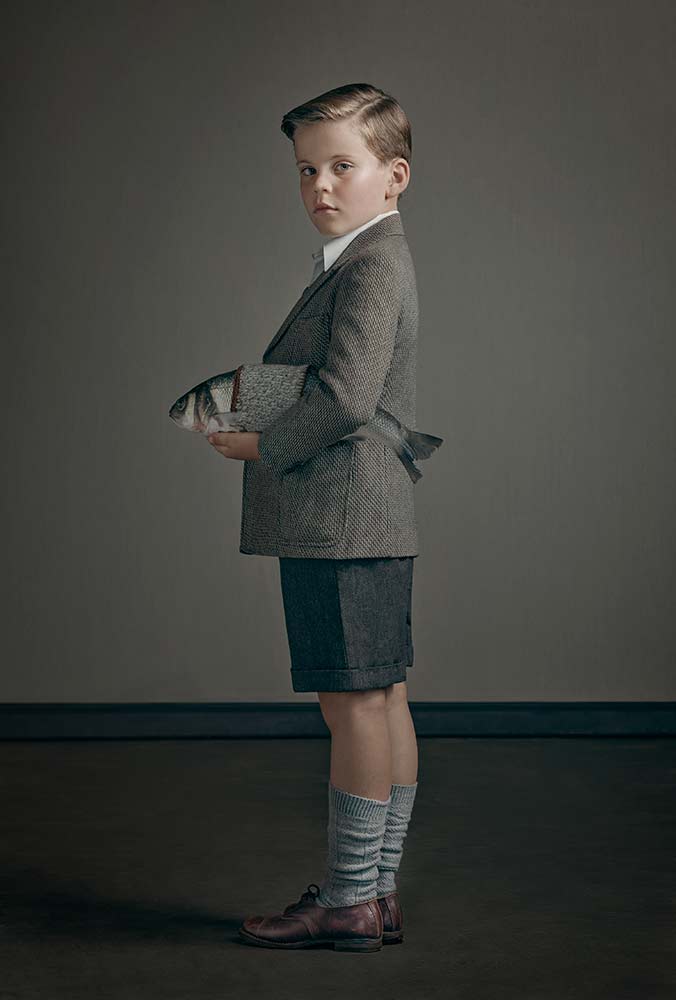
Gemmy Woud-Binnendijk ©
All rights reserved.
J. J.: You are the official global ambassador of Phase One, and you also do prestigious workshops. Many professional photographers we have interviewed in past publications mentioned you as an influencer and inspiration source. What does it feel like to be a role model, an inspiration to so many photographers trying to receive respectable recognition in the field?
G. W. B.: I’m thrilled to inspire others, I’m an open book, and anyone can ask me anything. I love to share what I’ve learned along the way, I’m far from perfect, but I try to do the best I can.
I never set this goal; I have an intense urge to create and surprisingly found that a camera was a good tool for converting ideas into visuals. My drive and my passion brought me to create things that are important for myself, and I’m very grateful to inspire others along the way.
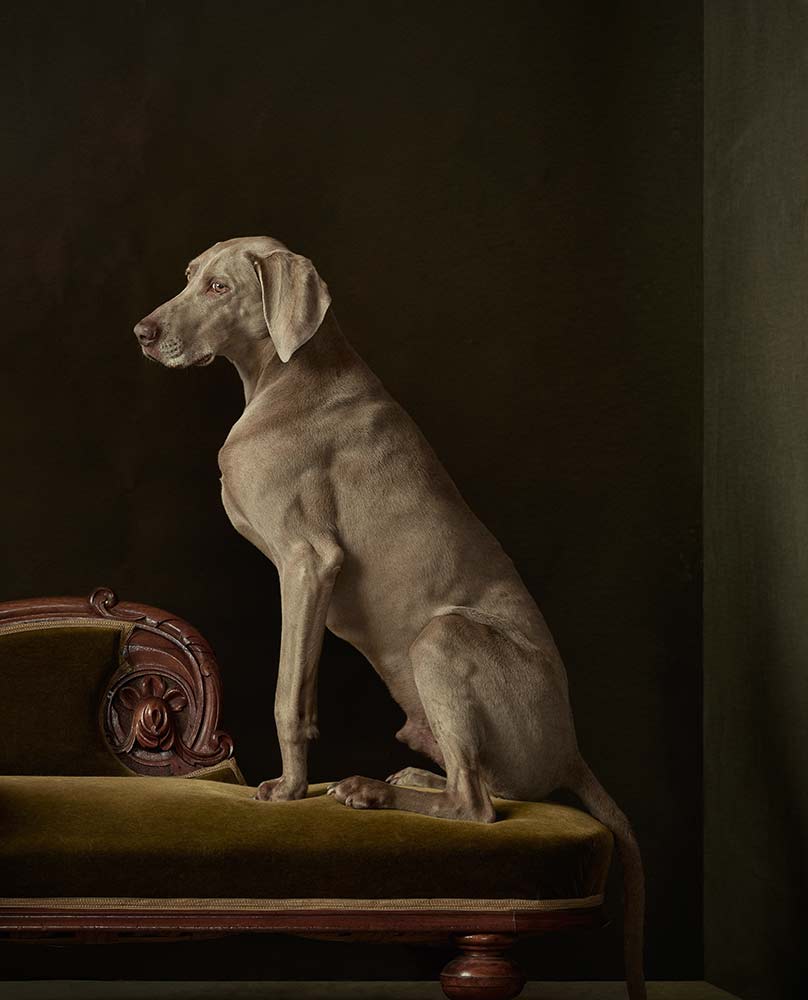
Gemmy Woud-Binnendijk © All rights reserved.
J. J.: How does your studio look like? What’s the significant difference made by using a 150mp camera in your work?
G. W. B.: I have my own studio space where I can build and create without anyone telling me to clean up my chaos.
I’ve been shooting Phase One for the past three years now, and I can’t imaging shooting with something else anymore. Shooting with 150mp can be tasking and less forgiving because everything is visible.
I don’t have multiple focus points, so you really have to learn to shoot with one focus point and recompose your shot; it’s immediately visible if your focus is off. So it took some patience to get one with my camera, but the quality it gives me is priceless!
J.J.: Since you are conducting workshops, what can you tell us about the upcoming workshops?
G. W. B.: Due to Covid-19, I couldn’t organize workshops; I hope to start doing them at the end of this year or at the beginning of next year.
Workshops are great! It’s always magical to see that you have ten attendees, and although the lighting and models are the same for everyone, they all create different sorts and emotions.
For me, that’s the most important part that people learn to create with their own vision or translation of their story. It’s always inspirational to have a group of people attending from all different countries worldwide, with other goals and backgrounds.
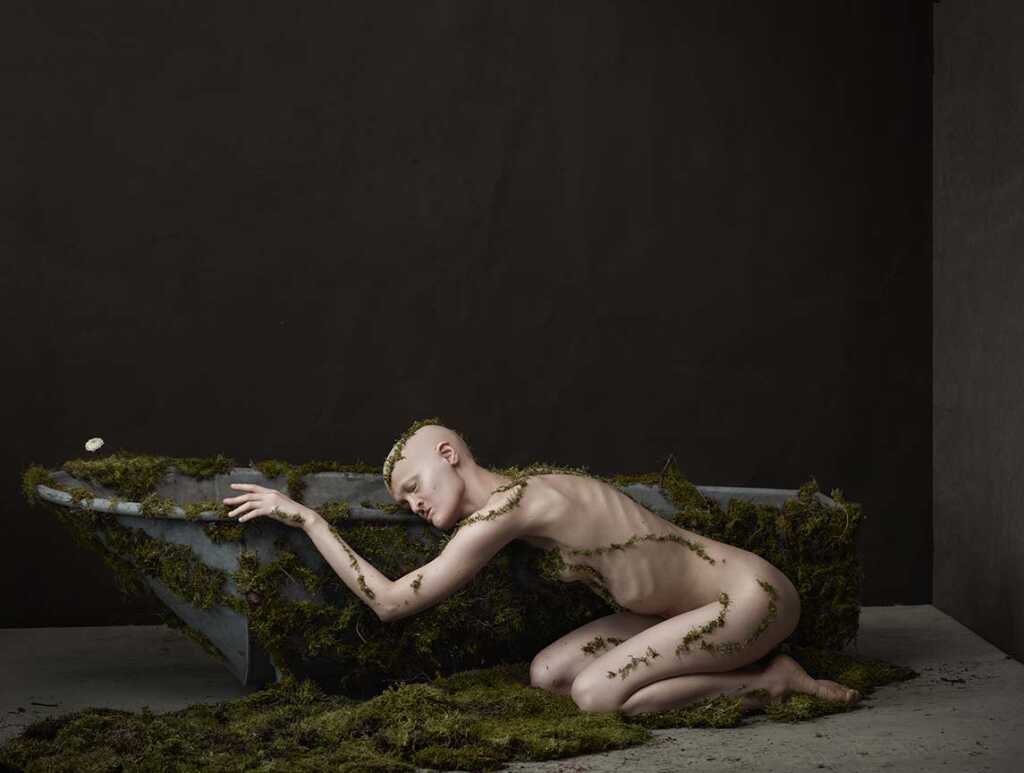
Gemmy Woud-Binnendijk © All rights reserved.
J. J.: In 2019, You were chosen as one of the most influential artists of today. Your work has been published on the “GOLD LIST- Top Contemporary Artists of Today!”, a special edition by Art Market Magazine (Lens’ sister magazine), which received an enormous distribution to bookstores and art fairs including at the Florence Biennale event. Now your work is being featured in Lens Magazine in an exclusive interview. Do you feel the love and appreciation? Have you reached your goals? What does the future hold?
G. W. B.: I absolutely feel the love and appreciation for my work! I’m very honored and proud of this recognition. It has been a struggle many times over the years. Every project comes with effort, tears, and laughter. It touches me when people appreciate and recognize my work.
I try not to make plans or set goals; I only wish to have the opportunity to create endlessly, stay healthy and keep my creative urge. The rest is one big adventure.

